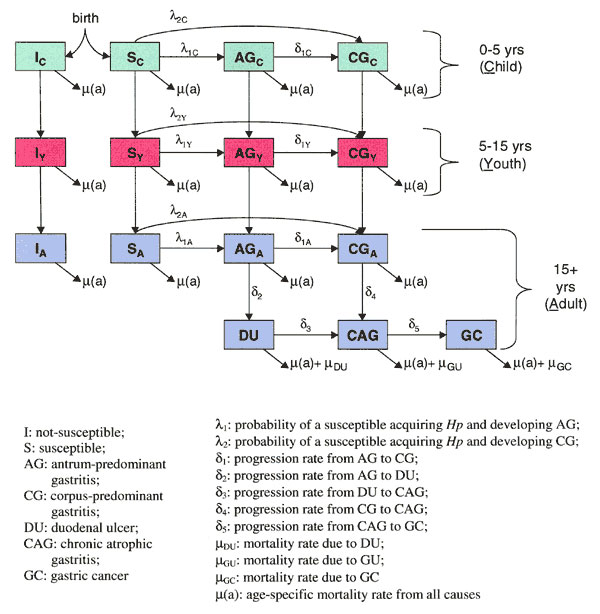Volume 6, Number 3—June 2000
Perspective
A Dynamic Transmission Model for Predicting Trends in Helicobacter pylori and Associated Diseases in the United States
Figure 1

Figure 1. Compartmental model of Helicobacter pylori transmission and disease progression. In this model, the population is divided into compartments according to age, infection status, and clinical state. Boxes represent population subgroups and arrows indicate transitions between subgroups, as well as flow into and out of the population (birth and death).
Page created: December 16, 2010
Page updated: December 16, 2010
Page reviewed: December 16, 2010
The conclusions, findings, and opinions expressed by authors contributing to this journal do not necessarily reflect the official position of the U.S. Department of Health and Human Services, the Public Health Service, the Centers for Disease Control and Prevention, or the authors' affiliated institutions. Use of trade names is for identification only and does not imply endorsement by any of the groups named above.